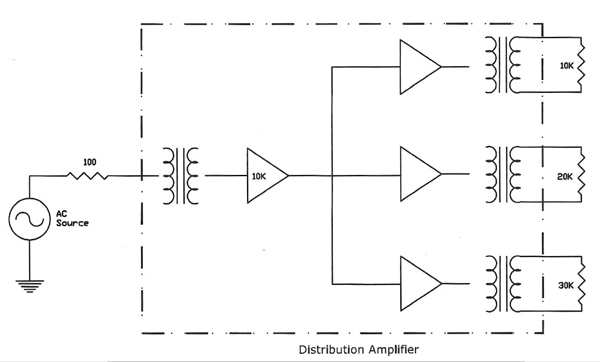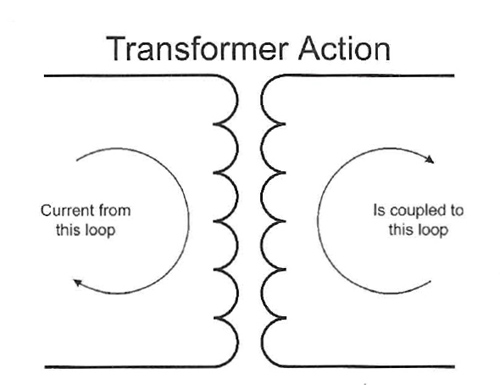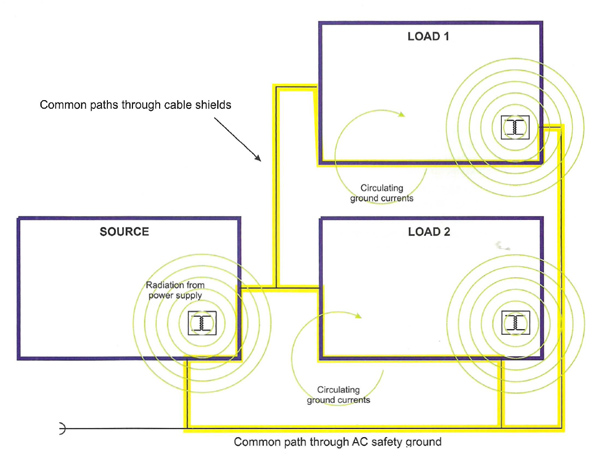
For instance, a short circuit across any of the inputs will kill the signal to all of the inputs.
For this reason (and others), this method is not recommended for driving loads that lie outside of the equipment rack that houses the source.
In these cases, load isolation can be achieved by using a distribution amplifier (DA).
The DA provides a single high impedance input for the signal from the source, but provides buffered low impedance outputs that can be used to drive remotely located loads.
The load buffering is achieved by using an active stage for each of the DA’s outputs.
A short across any one output is buffered from the other outputs by the active stage (Figure 2).
Yet Another Problem
While the DA solves the loading issue, we’re not out of the woods yet. Another problem that plagues distribution systems results from multiple ground connections between the various components.

These “shared” ground paths include the AC safety ground, the cable shields, and possibly paths between the equipment chassis via racks, etc. Noise currents will circulate through these “ground loops” and possibly infect the audio signal if this parasitic current finds its way onto a circuit board.
Isolation devices can allow the audio signal to be coupled from an output to an input with no physical wire joining the two circuits, eliminating at least one of the ground loops.
Transformer isolation allows the signal to be coupled via induction (Figure 3).

Optical isolation uses pulsed light to couple the signal, but usually requires the signal to be converted to a digital format. The transformer has an advantage in that the signal can remain in analog form.
The irony is that the same mechanism that allows a signal to be coupled between two circuits inductively also allows power supplied fields to be coupled into ground loops (Figure 4).
We’re faced with the classical engineering task of maximizing the effect when it helps us and minimizing it when it is working against us.

A Complete Solution
Putting all of these mechanisms to work, an active distribution amplifier with transformer balanced inputs and outputs may be the optimum way of distributing an audio signal to multiple components.
The active stages buffer the inputs from short circuits, and the transformers allow ground loops to be interrupted while allowing the signal to pass, while at the same time providing excellent common-mode rejection.
Many DAs also include level controls for each output, allowing the signal level to be optimized for mic or line level devices. But this approach is not cheap, and may be overkill for simple systems.
The next time you need to distribute an audio signal to multiple inputs, don’t overlook the simplicity of using a properly wired Y-cable to accomplish the task. If the signal needs to extend beyond the rack, a good DA will easily justify the investment.
